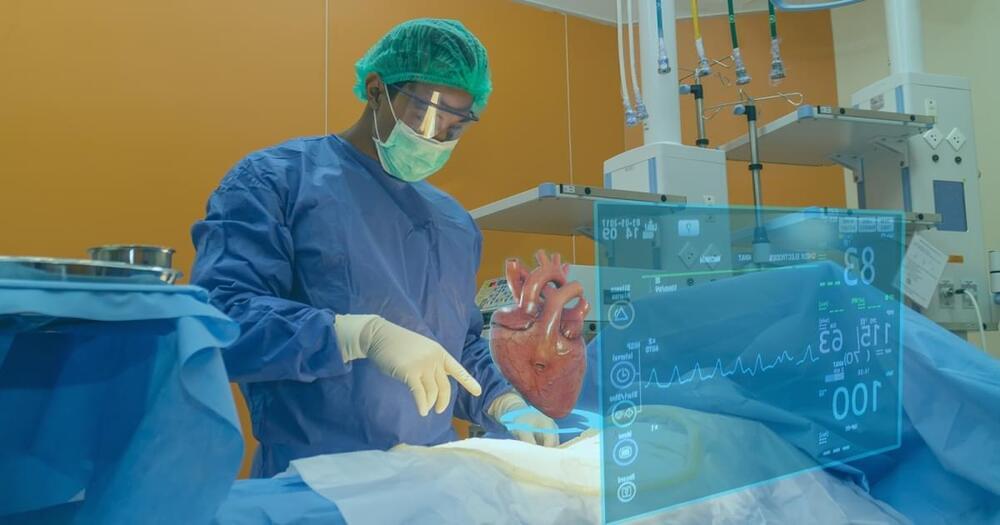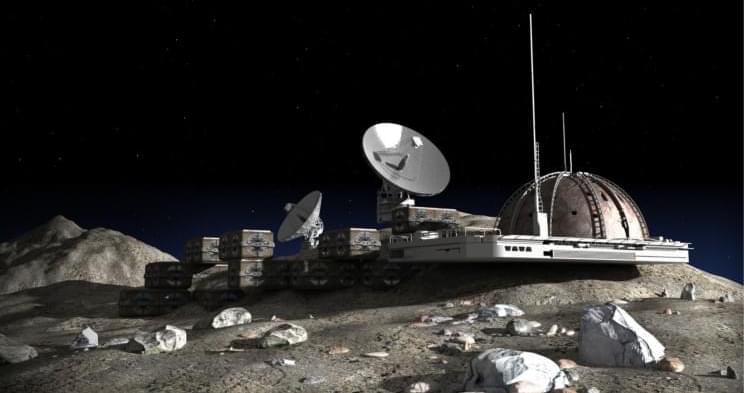Putting aside interactive filters and fantasy games, augmented reality has the potential to be a vital tool for future innovation.


The telescope will join the worldwide effort.
NASA’s James Webb Space Telescope (JWST) successfully launched on Saturday, and it will soon be ready to reveal parts of the universe that have never been seen before including a very large, but very broody, cosmic object at the center of the galaxy.
JWST will be joining in the ongoing, worldwide efforts to observe Sagittarius A*, the supermassive black hole at the center of the Milky Way. This elusive beast has been inferred from its gravitational effects, but imaging the black hole itself has proven elusive.
In April 2019, a group of more than 200 astronomers from all over the world unveiled the very first image of a black hole. Using the Event Horizon Telescope (EHT), an array of radio telescopes imaged the black hole at the center of the galaxy Messier 87 (M87). The EHT team compiled the image from eight telescopes on five continents working over an observing period of seven days.
TuSimple has stated that its “Driver Out” program is the first vital step in scaling its autonomous trucking operations on the TuSimple Autonomous Freight Network (AFN).
A robust AFN is now one step closer, following a successful 80-mile, driverless run in Arizona last week.
TuSimple announced its successful driverless ride via a recent press release, along with YouTube footage of the entire one-hour twenty-minute drive.


Chinese scientists are celebrating the success of a new hypersonic engine, according to reports. The past few months have been important for China in terms of the success of its hypersonic technologies.
Not only did the country get a new wind tunnel ready for tests of hypersonic weapons but it is also developing a hypersonic passenger plane. The fact that the country is in possession of a nuclear-capable hypersonic weapon system that is orbital in nature was also revealed less than a month ago.
Now, the successful testing of this engine will pave way for more advanced developments in components used for hypersonic flight, SCMP reported.


Moonshot I will soon pass the 80-knot mark (over 92 mph) in the next year.
French startup Syroco hopes its boat Moonshot I will soon pass the 80-knot mark (over 92 mph) in the next year, according to the Robb Report. To do this the firm is targeting some pretty ambitious achievements.
Keeping true to Syroco’s pioneering spirit and thirst for discovery, research has already made it possible to question fundamental paradigms in naval architecture. For only research, coupled … See more.

Updating the goal of Chang’e 8 mission.
Chinese space authorities told state media South China Morning Post (SCMP) that the unmanned lunar station, jointly built with Russia, will be completed around 2027.
The new plan, which is eight years earlier than previously scheduled, will help China get ahead of the U.S. in the space race.
China’s Chang’e 8 moon landing mission was originally aimed to carry out scientific studies like 3D-printing lunar dust, but the Deputy Director of China National Space Administration (CNSA) Wu Yanhua announced that the new target of the administration is putting an unmanned research station on the lunar surface, which was previously scheduled for 2035.
Wu, while not disclosing the details behind the decision, underlined that the mission was to “build a solid foundation for the peaceful use of lunar resources”.
China’s lunar program has progressed steadily and at its own pace for years, with Chinese space authorities repeatedly claiming that the country was not interested in a space race like the one during the Cold War.
Full Story:

Few individuals write about issues that impact human survival. Fewer still win multiple literary awards for writing science fiction novels. Hardly anyone joins a major corporation as chief futurist. Neal Stephenson can be credited for doing all three.
Writer, academician, video game designer and technology consultant are just some of the things Neal is famous for. He has authored historical epic novels ‘Cryptonomicon’ and ‘The Baroque Cycle;’ science fiction novels ‘The Diamond Age’ and ‘Anathem;’ contemporary thrillers ‘Zodiac’ and ‘REAMDE;’ and science fiction epic ‘Seveneves,’ among others.
His “Snow Crash” published in 1992 preceded ” The Matrix” series and introduced the concept of “The Metaverse”. Yes, Neal Stephenson coined the term. And his 1994 “Interface” preceded NeuraLink by over 20 years!
In his latest science fiction book “Termination Shock,” Neal lays out a scenario where an individual takes technological steps to intervene in climate change in order to ensure human survival. Let’s hope that this book does is not as prophetic as some of the others.
His imagination, unique sense of technology trends, immersive literary style, and attention to detail set a very high bar for the other science fiction authors. In the past, when people asked me what I would do when aging is defeated, I usually answered that I would catch up on Neal Stephenson’s novels as well as movies and video games based on his work.
Full Story:

What does NASA have planned for 2021 other than the commissioning of the Webb telescope? What about SpaceX and Blue Origin? With the landing of the Perseverance rover on Mars, the launch of the Lucy and DART missions, and the Juno probe’s continuing incredible work at Jupiter, 2021 was a spectacular success. Expect the same, but different in the next 12 months, with a bigger focus on our nearest neighbor—the Moon.
Here’s everything you need to know about space exploration, NASA missions, and space tourism in 2022:
Full Story: